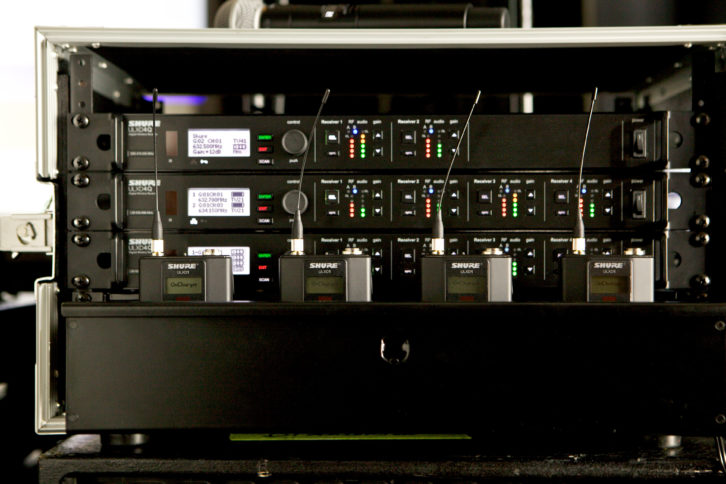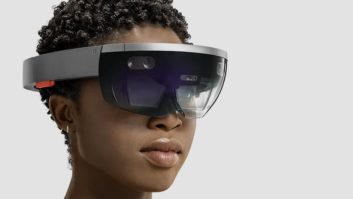
Different environments and different use cases all have a huge impact on how best to build a suitable wireless solution. The demands of a live touring event are very different from a conference venue or a corporate boardroom.
All events require coordination and planning that needs to take place before the event but especially for live events the production crew needs to know what the RF environment will be like at the venue location. They need to know which frequencies are available and they will need to licence appropriate frequencies ahead of time. Most larger-scale events of this kind depend on the UHF bands of RF spectrum as this space offers us a reasonable amount of space with the performance levels required to run large channel counts over reasonable distances.
For smaller events, users may not require such large channel counts — or operating distance. In which case, other areas of spectrum become feasible, areas such as 1.8GHz and the DECT band. The DECT bands have an added advantage in that they’re available for use globally and licence-free.
Other events in the live space might call for high-channel counts and zoning, in order to achieve reliable performance across multiple spaces or rooms. Corporate events or trade shows are a great example here. In this case, a well-versed RF engineer may utilise features like our ‘high-density’ mode found in Shure ULX-D and Axient Digital. In high-density mode, we can turn down the output power and increase the channel count dramatically. The reduced power makes zoning between multiple rooms much easier, reducing the possibility of interference between one seminar room to the next.
“Engineers shouldn’t shy away from wired technology altogether; given the squeeze on available RF spectrum”
Whichever wireless environment you operate in, the risk of interference is always present. The demand for wireless airspace across the board has never been greater; we’re living in a time where the demand for wireless microphones is continually increasing, while the space we have to operate is steadily decreasing. The key across all wireless use cases is a combination of spectral efficiency — as in using equipment that makes efficient use of the space available — and a solid understanding of RF coordination. No matter what your use case for wireless, a strong understanding of how to spec, coordinate, and deploy wireless systems is key.
You may also be interested in:
- RH Consulting releases new report on networked audio adoption
- Shure brings wireless to historic conferencing facility
Greater numbers
Across the board, all users are deploying wireless systems in greater numbers. Installed corporate audio technology is exploding, as more companies see the value in high-quality AV connectivity to increase business efficiency. In theatre applications, we’ve seen somewhat of a revolution in production values, where traditional boom-mic operation is replaced by wireless tech. The miniaturisation of wireless bodypacks has continued this trend. We’ve seen use of wireless increase in circumstances where previously it wasn’t an option, such as sporting events. Even in live touring, the amount of channels has increased (and continues to increase) drastically. Modern consumers expect a certain standard of production, and wireless microphones are a key factor in upholding expectations. Even at work, businesses want to remove the clutter of wireless wherever possible, and the smoother this all works, the better it is for the user and the visitor. That being said, engineers shouldn’t shy away from wired technology altogether; given the squeeze on available RF spectrum, if the production will not suffer for using a wired alternative, then it may be wise to do so. Our innovation and technology is allowing us to reassess how we can manufacture wired microphones that offer huge versatility for multiple uses.

Wireless misconceptions
One of the biggest misconceptions we hear about wireless is around licensing. It’s still commonly thought that you can buy a system, plug it in and start using it straight away. There are systems that allow this, such as any 2.4GHz system, or DECT based wireless, but in almost all other circumstances you need a licence to operate legally. This is not only important from a legality viewpoint, but also from a lobbying perspective when it comes to campaigning to preserve the space available for wireless microphone operation. If regulators like Ofcom are to take us seriously when it comes to spectrum regulation, the greater the visibility they have of just how many people are using wireless microphones, the better.
“We shouldn’t be as simplistic to think that, just because a system is digital, it is more efficient”
Another commonly held misconception is that digital wireless is assumed to be more efficient than analogue wireless. It’s true that a well-designed digital system can outperform an analogue wireless setup in terms of spectral efficiency, but this is not always the case. A high-end analogue system will still perform well on-air where a poorly engineered digital system cannot. This being said, the future of wireless tech is inevitably digital due to the efficiency gains of digital modulation schemes. The improved efficiency is down to the more predictable deviation of digital wireless signals when compared to a frequency-modulated analogue signal. However, to reiterate, we shouldn’t be as simplistic to think that, just because a system is digital, it is more efficient. The linearity of the transmitter and robustness of the filters in the receiver play a key role. The better engineered a system is, the more efficient it will be.






